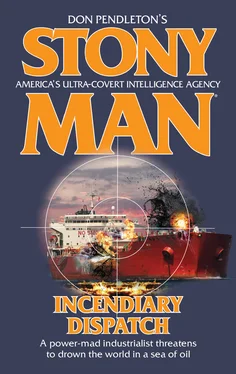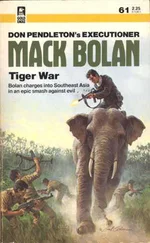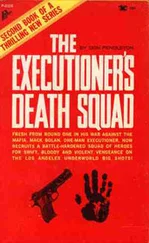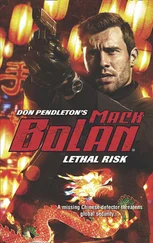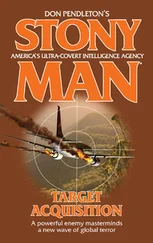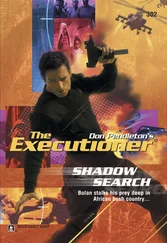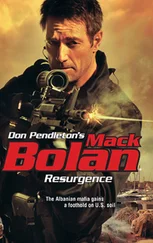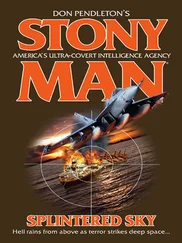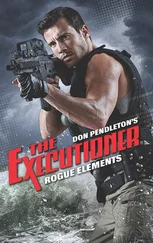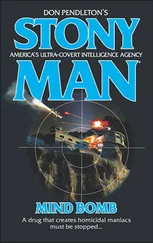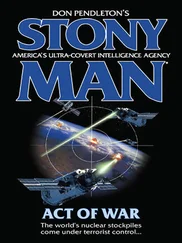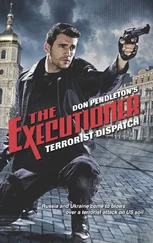“Does anyone have one of those devices?” Brognola said.
“As far as we know, most of the oil fires continue to burn and no investigation teams have been able to get to the scene of any of the actual explosions.”
“What about Alaska?” Brognola demanded.
“No.” Price looked at the screen. Video pickups shifted automatically even when Brognola’s image moved from one screen to another. “The pipeline attacks followed certain patterns, from what we can tell. The explosives detonated simultaneously—maybe as many as twenty to thirty small explosions at once. More in some cases.
“The pipeline in Wyoming was opened up at approximately thirty-four locations over a distance of two miles. The oil spilled out under the pipeline pressure. There are block valve stations on the line that responded to the pressure drop automatically and immediately shut down oil flow. However, at least fifteen of the explosions took place uphill of the station that is supposed to protect the town in case of a pipeline breach. The next station shut down the pipe, but the volume of oil remaining in the pipelines was considerable and was gravity-fed into the town. Gravity-fed oil flow from punctures on the east and the west of the town fed the fires on the town limits and trapped the population inside.”
Price was now looking at the surface of the War Room conference table, not at any of them. She opened her hand, a hopeless gesture. “The town was surrounded, blocking all escape routes.”
The room full of people was silent for a moment.
“Anybody get out of that town?” Carl Lyons asked.
“It’s still burning.”
“Oh.”
“It’s important to note that most of these attacks were not intended to result in significant loss of life,” Aaron Kurtzman said. “Most of the pipeline attacks were not in populated areas. The intention was clearly to put these pipes out of commission. The same intention was behind the sabotage of oil tankers. We have a number of oil tankers burning or sunk, including several tankers that were nonmobile—used only for storage, not oil transport. In some ports, the damage is so widespread that it has not even been determined yet whether there was one ship sabotaged or more than one.”
“Obviously,” Price said, “whoever did this wanted to cripple the movement of oil and get the attention of the world. They wanted there to be no doubt in anybody’s mind that they had the means to do it.”
“So if they wanted to stop the movement of oil,” asked Rafael Encizo, one of the Phoenix Force commandos, “why’d they hit all the aircraft? A passenger jet to India, a passenger jet to Brazil—plus a cargo flight into Moscow? What am I missing here? What’s the purpose?”
“Terror is the purpose, we must assume,” Barbara Price said. “Whoever did this wanted the world to know they could hit anywhere. Anyplace and anybody.”
“Which brings up the big question of who?” Brognola said. “Unfortunately, we’ve got precious little to go on.”
“How can that be?” Carl Lyons demanded. “You don’t set off five hundred bombs at once, all around the world, and not leave some evidence.”
“Of course there’s evidence,” said Gary Manning, Phoenix Force’s demolitions expert. He was a veteran of the Royal Canadian Mounted Police, where he had once served as an antiterrorist operative. He was a hulking, burly, square-jawed figure, often subdued compared to some of the other figures in his team, but never hesitant to say what was on his mind. “Half those hot spots are still burning. You think there’s been time to go in and sift through the wreckage?”
“FBI forensic demolitions analysis teams are on-site at five pipeline explosions, including at a Trans-Alaska Pipeline site thirty miles north of the Yukon River,” Brognola said.
“The blasts were all planned for maximum destruction. In Alaska, it seems the planning went awry,” Price said. “The pipeline wasn’t ripped apart as thoroughly as some of the others. It appears that only about a third of the explosives in the series actually detonated.”
Kurtzman typed a command into the interface board built into his wheelchair. The onscreen image of Hal shifted to a secondary screen and a map of Alaska showing a red, thick line that indicated the route of the Trans-Alaska Pipeline System appeared on the main screen. He zoomed in on Fairbanks, then followed the trail of the pipeline north until it crossed the Yukon River and headed north another thirty miles.
“It looks as if most of the pipeline explosives included twenty to thirty shaped charges designed to go off simultaneously,” Price explained. “In Alaska, an estimated ten charges detonated simultaneously. The pipeline was damaged seriously, but not on the scale we’ve seen elsewhere around the world. We have video. Bear?”
She nodded to Kurtzman, who brought up shaky aerial footage of empty landscape. “A station in Fairbanks rushed a chopper to the scene as soon as they heard about it,” Price said. “They started taping when they saw the smoke.” The video shifted to show a flaming, billowing canal of black oil covering the ground and surrounding what was apparently an undamaged section of the pipeline. The destroyed section of the pipe appeared small, but it was difficult to grasp the scale from the shaky camera.
Then the pipe split open and more oil flooded out.
Manning was leaning forward on the table, watching the video intently. “So the charges didn’t go off when they were supposed to, but as soon as the fire catches up to them they ignite.”
“That’s what we think happened.”
“You said ignite,” stated the black Phoenix Force commando, Calvin James, who had once been a Navy SEAL.
“That’s what I said—ignite,” Manning agreed. There was a moment of silence as they stared at the screen, and the pipeline broke open farther downstream. More oil spilled out and the flames intensified.
“That’s a pretty damned efficient release of energy,” Manning pointed out, “even going off at the wrong time. It didn’t send oil spraying in all directions. It just opened up the metal.”
“Low explosives engineered to just break the shell?” James suggested.
“Maybe. But nah,” Manning said, frowning at the screen. “Got any more of those on tape?”
“You’re in luck,” Kurtzman said, nodding at the screen. There was a cut and the shot changed. Now the camera was zooming in close to the pipe. The men in the news chopper were interested in the damage being done to the pipeline, just as Manning was. The image was shaky and smoke-blurred. They couldn’t make out anything actually attached to the pipe. The pipe was cooking in the flames from the spreading oil underneath it, then a bright white streak appeared on the surface of the metal and it grew into a narrow opening in the pipe. Oil, no longer under pressure, oozed out, and the conflagration quickly wormed its way inside and ripped the pipeline wide open.
“What the hell was that?” growled Rafael Encizo. Stocky and powerful, he’d been born in Cuba and spent plenty of time rotting in Castro’s prisons. Castro couldn’t kill Encizo, but only made him stronger. Encizo was a naval tech specialist, as much at home in the water as on land.
“Virtually no visible fragmentation,” Manning pointed out.
“These bastards were trying to be neat about it?” McCarter demanded.
“They were trying to be efficient,” Manning said with a grim smile. “You go setting off five hundred devices at a time, you need to control costs. You figure out just exactly how much explosive or incendiary you need, you figure out how to make it do exactly what you want it to do, then you use just enough each time to do your dirty work.”
A man in a cowboy hat had been stretched out in the chair alongside James. As the others kept their eyes glued to the progressive damage playing out along the Alaskan pipeline, the man in the hat now walked around to stand behind Akira Tokaido.
Читать дальше
